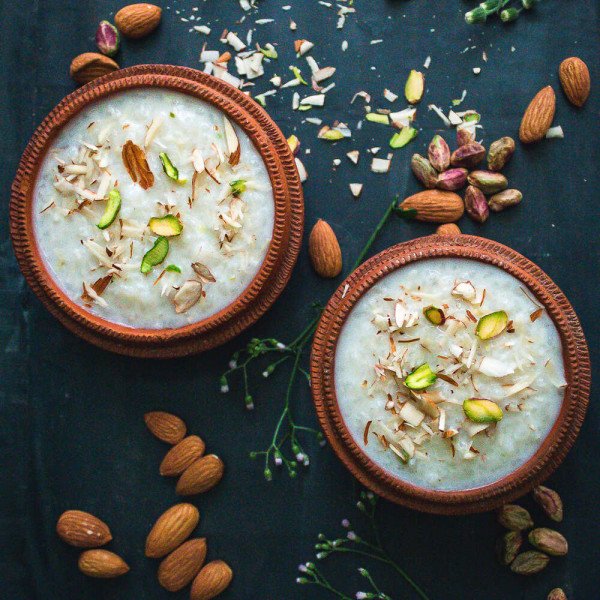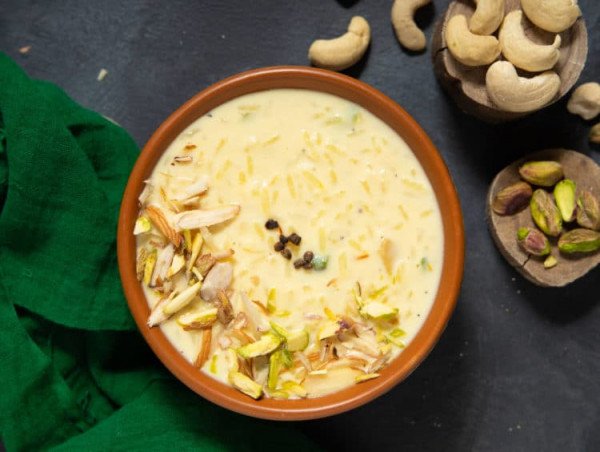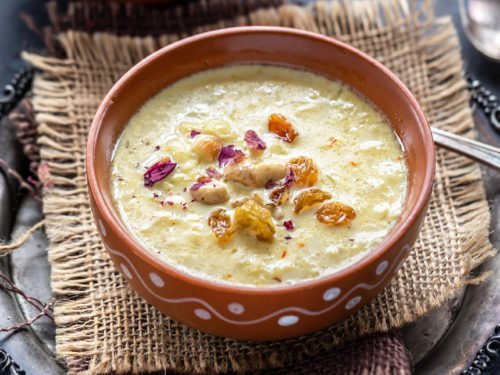

Although rejected by others for being too simple and stodgy, rice pudding still remains one of my favourite comfort foods. In fact, it’s been around for decades, believe it or not, and was believed to have originated in China, which has an ancient culture of rice. Some food historians have disputed this; they argue that rice pudding probably originated in Pakistan, which has an ancient culture of rice as well as an ancient sugar culture.
There’s no need for an introduction to the very humble, creamy and delicious Pakistani dessert.
Chawal ki Kheer Recipe or Pakistani Rice Pudding. It is known by different names, aka kheer and firni as one of the most popular desserts in the country. The use of only three simple ingredients is what makes it so popular: rice, milk and sugar. Yeah, only those three ingredients were used in the traditional recipe; however as time went by, people began to spice it with nuts, saffron and rose. Many times, instead of sugar, a lot of people also sweeten in condensed milk; while, undeniably, somehow kheer gets more creamy, it loses its original flavours. Therefore, I keep it easy at all times and use sugar.
Rice pudding was never referred to as rice pudding in Asia; instead, it was referred to as sweet rice porridge. Until boiling or baking, the rice is mixed with water, milk or cream, then sweetened to taste. Dried fruits, including raisins or apricots, are often added to the mixture.

Kheer is a traditional dessert made with milk, rice and a sweetener made in Pakistan. It can also be made instead of rice with other ingredients, such as vermicelli, sago and even with carrots. But the popular one is rice kheer.
Kheer is produced in full-fat milk by simmering rice until it is cooked. Then it is sweetened with cardamom powder and flavoured with it. Nuts and raisins are garnished with it.
To make kheer, basmati rice is most commonly used as it provides a fragrant & delicious aroma. However, various forms of rice that are grown locally are used in various regions of Pakistan. So, feel free, if you don’t have basmati rice, to use any regular rice.
The Mughal invasions of Pakistan would probably have inspired this dish. The rich fragrant food came along with them and then the Pakistani cuisine mixed & planted their roots to form a part of it. Similar kinds of rice puddings are also part of Turkish, Lebanese, Greek, Afghan, African & many other European & Mediterranean cuisines with minor variations.

In Pakistan, Earthenware/clay cups called “Matkas” are typically used to serve chilled phirni. In addition to making it look pretty, some of the liquid is even absorbed by the clay pot, giving it a thicker consistency. When the flavours are allowed to mature for 6-7 hours or even for a day it tastes better. After frying, some versions of Firni are baked in cups, then chilled & served.
Hot or chilled, Phirni can be eaten. But only when it is served chilled in a clay pot or an earthen bowl then its true taste can be enjoyed. The earthy taste infuses it with the clay pot and it also gives an authentic feeling. You can use your usual serving bowls, though too.
Many cheerful occasions are celebrated in Pakistan, as well as all over the world, with some variant of phirni on the table. Pakistan has two variations of phirni. One, which is strong and creamy, is called Kheer. The other one, which is lighter and thinner in texture, is called Firni. For marriage feasts or for the celebration of Eid, both forms of rice puddings are baked.

Follow Food of Pakistan for the Best Blogs and Recipes related to Traditional and famous foods of Pakistan.